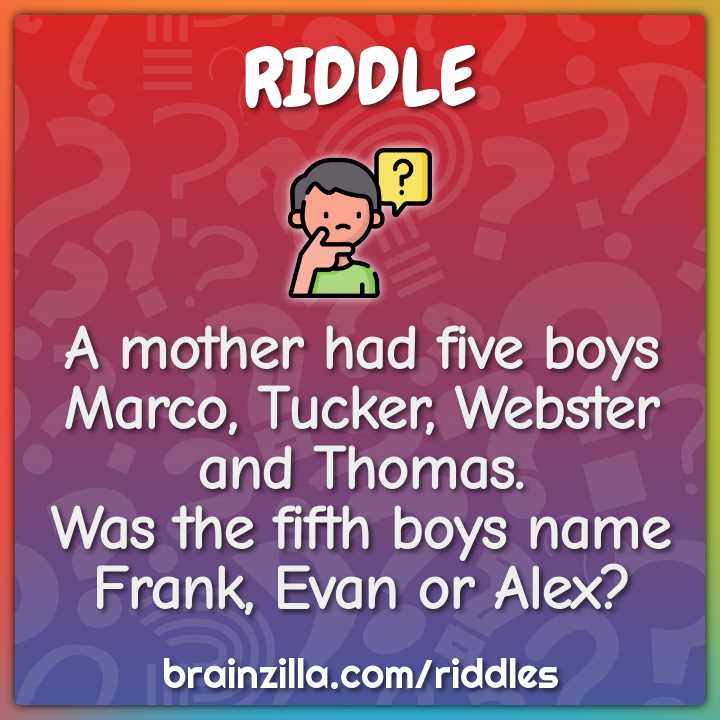
There’s something fascinating about puzzles that initially seem tricky but reveal their solutions in the most straightforward manner. These brain teasers often lead to moments of realization, where the answer feels so simple that it’s hard to believe it was hidden behind such complexity. The thrill of solving these challenges comes from the way they make us rethink our approach to problems and question our assumptions.
In this section, we will explore how these mind-bending problems test our ability to think critically and creatively. While their solutions might seem obvious in hindsight, the process of getting there is what makes them so intriguing. By breaking down these puzzles, we can uncover the reasoning and logic that make them both fun and rewarding to solve.
Complicated Riddles with Simple Answers
Many puzzles appear difficult at first glance, requiring deep thought and creative problem-solving. However, once you reach the solution, it often seems surprisingly straightforward. This section explores the beauty of these brain teasers that, despite their seemingly tricky nature, hold easy-to-spot solutions that can leave you wondering why you didn’t think of them sooner.
These intriguing challenges are designed to make you think outside the box. Often, the answer is hiding in plain sight, waiting for a fresh perspective to unveil it. Below are a few examples of such puzzles that highlight how simplicity can be disguised in complexity:
- What has keys but can’t open locks? – A piano. The answer is obvious once you realize that “keys” can also refer to piano keys, not just traditional keys.
- I speak without a mouth and hear without ears. I have no body, but I come alive with the wind. What am I? – An echo. The trick lies in interpreting the characteristics of sound, not a living entity.
- The more of this there is, the less you see. What is it? – Darkness. A simple concept hidden within the phrasing of the question.
- What can travel around the world while staying in the corner? – A stamp. The answer cleverly plays on the dual meaning of “corner” and “travel.”
- What comes once in a minute, twice in a moment, but never in a thousand years? – The letter ‘M’. A linguistic challenge that feels much trickier than it really is.
These examples show how puzzles often rely on language tricks or simple ideas that, when viewed from the right angle, reveal their true nature. The enjoyment of solving such puzzles comes from the moment of realization, where the complexity disappears and the solution seems almost too obvious.
How Simple Answers Challenge Our Minds
It’s often said that the most straightforward solutions are the hardest to find. Our brains tend to overcomplicate problems, searching for intricate or obscure solutions when the correct one is often much more direct. This tendency to overthink is what makes these types of problems so intriguing–they force us to rethink our usual approach to problem-solving and open our minds to the possibility of simplicity.
When faced with a complex question, our first instinct is often to consider every possible scenario or to think in terms of complexity. However, when the solution is straightforward, it can feel like an epiphany. The moment of clarity challenges our cognitive processes and reminds us that sometimes the easiest solution is the one we overlook.
| Challenge | Thought Process | Final Solution |
|---|---|---|
| What has a neck but no head? | Thinking of creatures or objects that could have a neck | A bottle |
| What gets wetter the more it dries? | Looking for something that changes its state as it gets wet | A towel |
| What comes down but never goes up? | Considering natural phenomena or actions | Rain |
| What has one head, one foot, and four legs? | Thinking about living creatures or objects with multiple legs | A bed |
As seen in the table, the mental journey to reach the solution is often filled with convoluted thinking. However, the clarity of the correct response brings a sense of satisfaction that comes from realizing how simple the answer truly is. These moments serve as valuable reminders that our minds can sometimes make things more difficult than they need to be.
The Fun of Complex Puzzles
Engaging challenges that seem difficult at first often bring the most joy when solved. The excitement comes from the process of unraveling a problem, where each step brings us closer to clarity. These challenges test our creativity, patience, and ability to think from different perspectives. As we work through them, we are constantly pushing the limits of our problem-solving skills.
Why We Enjoy Tough Challenges
The thrill lies in the complexity that initially seems overwhelming. Every puzzle offers a unique path to follow, and the satisfaction is in finding that path. The brain enjoys the stimulation of working through the layers of a problem, especially when there’s a twist that forces us to reconsider what we think we know. It’s this combination of difficulty and reward that makes these tasks so addictive.
The Rewards of Overcoming Obstacles
Once the challenge is overcome, the sense of achievement is immediate. There’s a certain joy in realizing that what seemed insurmountable was, in fact, manageable. The more we encounter and solve these complex challenges, the sharper our cognitive skills become. This experience helps us develop a mindset that enjoys overcoming obstacles, making us more resilient in facing life’s everyday challenges.
Why Riddles Make You Think Differently
Engaging puzzles that challenge our reasoning often force us to look beyond our initial thoughts. These mental challenges push us to think in unconventional ways, shifting our approach to problem-solving. The beauty of these puzzles lies in their ability to redirect our cognitive processes, helping us view a situation from different perspectives. By doing so, they teach us that answers can come from unexpected directions.
Unlike typical problems, these challenges don’t follow a clear-cut path. They require lateral thinking, where the solution often involves reinterpreting the question itself. This shift in mindset encourages creative problem-solving, which is a valuable skill both in and outside of puzzle-solving contexts.
| Challenge | Initial Thought | New Perspective |
|---|---|---|
| What can you catch but not throw? | Thinking of objects you can physically catch | A cold |
| What runs but never walks? | Thinking of moving entities or machines | Water (a river) |
| What can travel around the world while staying in the corner? | Considering transportation methods | A stamp |
As shown in the table, these types of mental challenges require us to discard our first instinct and open our minds to alternative answers. This change in approach is what makes solving such puzzles both challenging and rewarding. They teach us that sometimes, the key to success is not focusing on what seems obvious, but on seeing the problem in a new light.
Unveiling the Mystery Behind Simple Solutions

At first glance, many challenges seem complex and require careful thought to solve. However, once the solution is revealed, it often turns out to be far less intricate than expected. This moment of clarity highlights how our minds tend to overcomplicate things. The real mystery lies in understanding why we overlook the most straightforward paths to solving a problem and what that says about our cognitive processes.
These moments of realization are valuable, not because the solutions are difficult to grasp, but because they reveal how our thought patterns can sometimes cloud our judgment. The challenge is not in finding a solution, but in discovering how we can think differently to arrive at it more quickly. By stripping away unnecessary complexity, we uncover the elegance of the problem and its solution.
The Role of Logic in Riddles
Logic plays a crucial part in solving puzzles that initially appear tricky. At the heart of many of these challenges lies the need to think clearly and systematically. While the problem may seem baffling, applying logical reasoning often reveals a simple path to the solution. Understanding how to break down a problem and apply step-by-step analysis is what transforms a complex issue into a solvable one.
Logical Thinking and Problem Solving
Logical reasoning helps us dissect the given information, identifying patterns and connections that aren’t immediately apparent. By using deduction and inference, we can strip away irrelevant details and focus on what truly matters. This method of thinking helps us move from confusion to clarity, turning a seemingly impossible challenge into a straightforward one.
The Process of Deduction

Deductive reasoning is the key to solving many puzzles. It involves starting with a set of known facts and narrowing down possible outcomes. Each step in the reasoning process leads to the next, guiding us toward the answer with precision. This method ensures that even the most puzzling questions can be addressed logically.
| Challenge | Logical Step | Solution |
|---|---|---|
| What has a heart that doesn’t beat? | Consider something with a “heart” that’s not alive | An artichoke |
| What is always in front of you but can’t be seen? | Think of something invisible yet essential | The future |
| What has many keys but can’t open a single door? | Focus on objects that have keys, but not in a traditional sense | A piano |
The table above illustrates how applying logical steps helps uncover the answer to each challenge. Through reasoning, we can quickly identify the most relevant details, leading us to the solution. In this way, logic is not just a tool but the foundation for understanding and solving these puzzles effectively.
Riddles as a Tool for Mental Agility
Engaging in thought-provoking challenges is an excellent way to sharpen the mind and improve cognitive flexibility. These types of exercises require individuals to adapt their thinking, analyze information from multiple angles, and quickly switch between various mental processes. By regularly solving such puzzles, one can enhance the brain’s ability to think on its feet, improving both creativity and logical reasoning.
Boosting Cognitive Flexibility
One of the key benefits of tackling these mental exercises is that they promote cognitive flexibility. When faced with a challenging problem, the brain must be able to shift gears, thinking in different ways to find a solution. This flexibility is not only useful in puzzle-solving, but also in real-life scenarios, where the ability to adapt to new information or changing circumstances is crucial.
Enhancing Problem-Solving Skills
These puzzles also help enhance problem-solving abilities by encouraging creative thinking. As each puzzle is different, it forces the mind to approach each situation from a fresh perspective. This constant exercise helps improve the ability to identify patterns, make connections, and think critically, all of which are important skills in everyday life and work.
Understanding the Trick in Each Puzzle
Every challenging task has an element designed to mislead or confuse. The key to unlocking the solution often lies in recognizing this subtle trick and seeing through the layers of complexity. By understanding the underlying mechanism that makes a puzzle appear difficult, we can learn to approach it differently and find the path to the correct solution. These tricks often play on our assumptions and expectations, making the task seem more complex than it truly is.
Once we identify the hidden element that tricks our minds, the solution becomes clear. It’s not that the task itself is inherently difficult, but rather that our usual problem-solving methods don’t account for the misdirection at hand. In many cases, the trick challenges us to reconsider our initial understanding and forces us to think outside the box.
Revealing the Trick: By slowing down and analyzing each aspect of a problem, we can pinpoint where our thinking may have gone astray. Often, the solution requires us to look at the problem from a completely new angle. It’s in this shift that the true simplicity of the task is revealed, allowing us to solve it with ease.
Famous Riddles with Surprising Answers
Some of the most well-known puzzles leave people scratching their heads at first, only for the solution to be unexpectedly simple. These challenges often seem perplexing, yet they highlight how easily we can overlook the most obvious solutions. The trick lies in how these puzzles are framed, encouraging a deeper level of thinking that ultimately leads to surprising conclusions. These examples show that even the most baffling questions can have clear and straightforward solutions once we shift our perspective.
The Classic “What Am I?” Puzzles
One of the most famous types of puzzles involves asking, “What am I?” These questions often describe an object or concept in a way that makes it difficult to identify at first glance. The complexity often arises from the way the description is worded, leading us to overthink the answer. However, when the solution is revealed, it is often something much simpler than expected. For example, “What has keys but can’t open doors?” The answer is a piano, a solution that may seem too obvious once it is uncovered.
Unexpected Turns in Common Problems
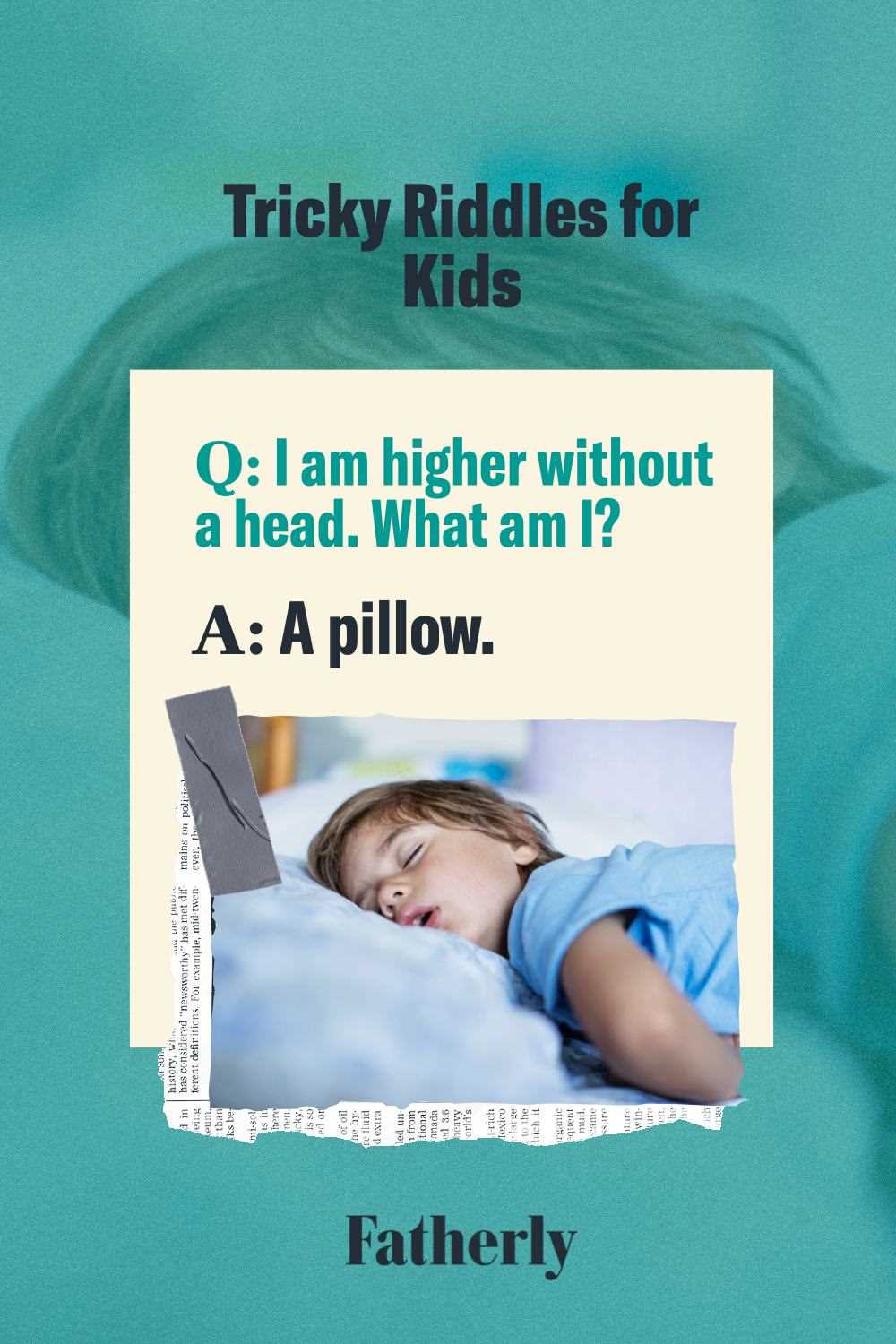
Some puzzles play on our assumptions about the world. They describe something in a way that leads us to make a false connection, only for the true answer to be quite different from what we initially imagined. For instance, the question “What comes once in a minute, twice in a moment, but never in a thousand years?” has a surprising answer: the letter “M”. This clever play on language shows how even the simplest concepts can be hidden behind layers of expectation.
The Power of Reinterpretation: In many cases, the key to solving these challenges lies in the ability to reinterpret the question itself. By breaking free from our initial assumptions and considering all possibilities, we can uncover the elegant simplicity behind the solution. This is what makes such puzzles so enjoyable – they encourage us to think differently and see the world in a new light.
How to Solve Complex Puzzles
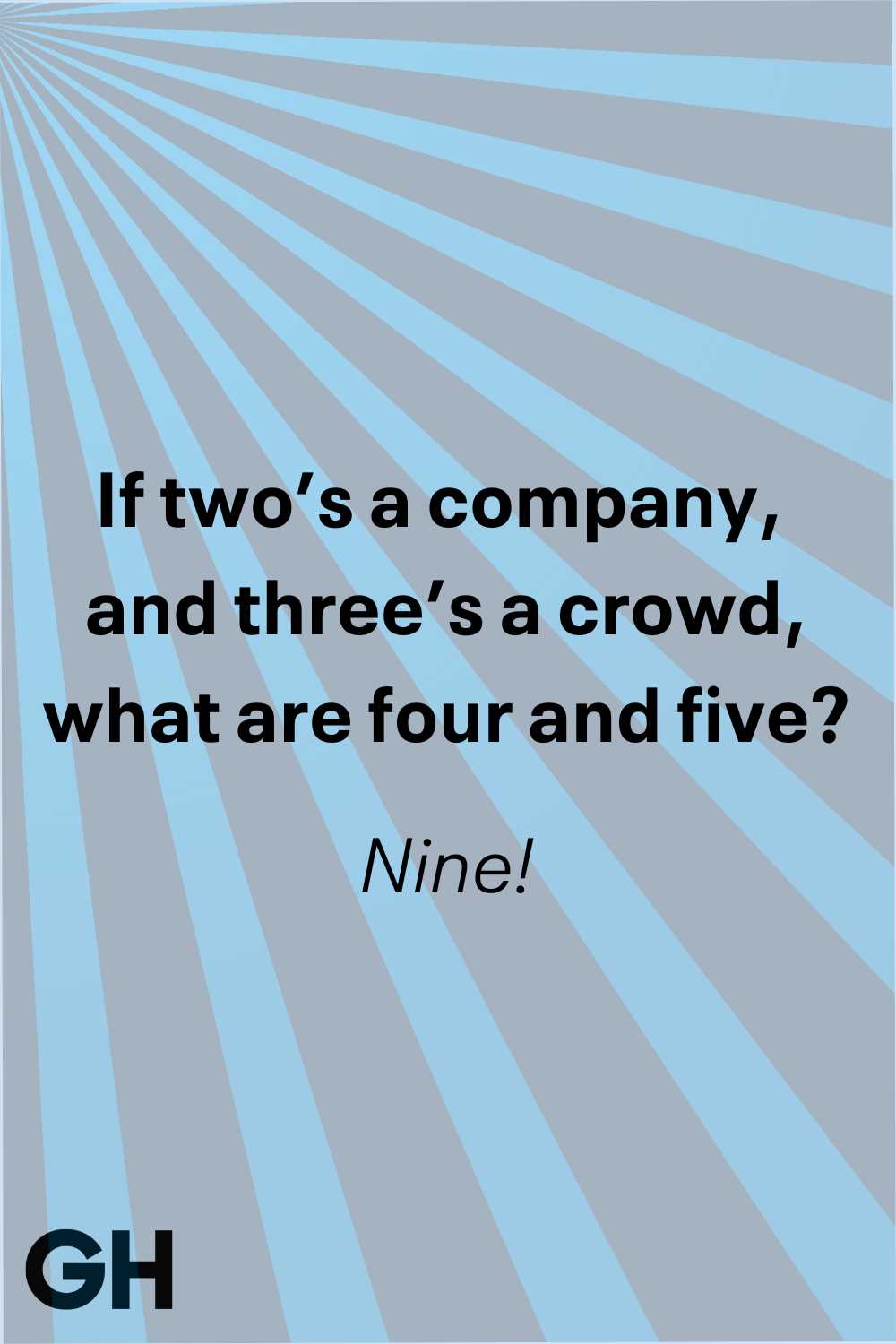
Solving perplexing challenges often requires a shift in perspective and the application of a methodical approach. When faced with a difficult task, it’s easy to get overwhelmed by the complexity, but breaking the problem down into smaller, manageable pieces can lead to clarity. By staying calm, analyzing each clue carefully, and questioning initial assumptions, you can begin to uncover the solution that might be hiding in plain sight.
Step 1: Analyze the Information
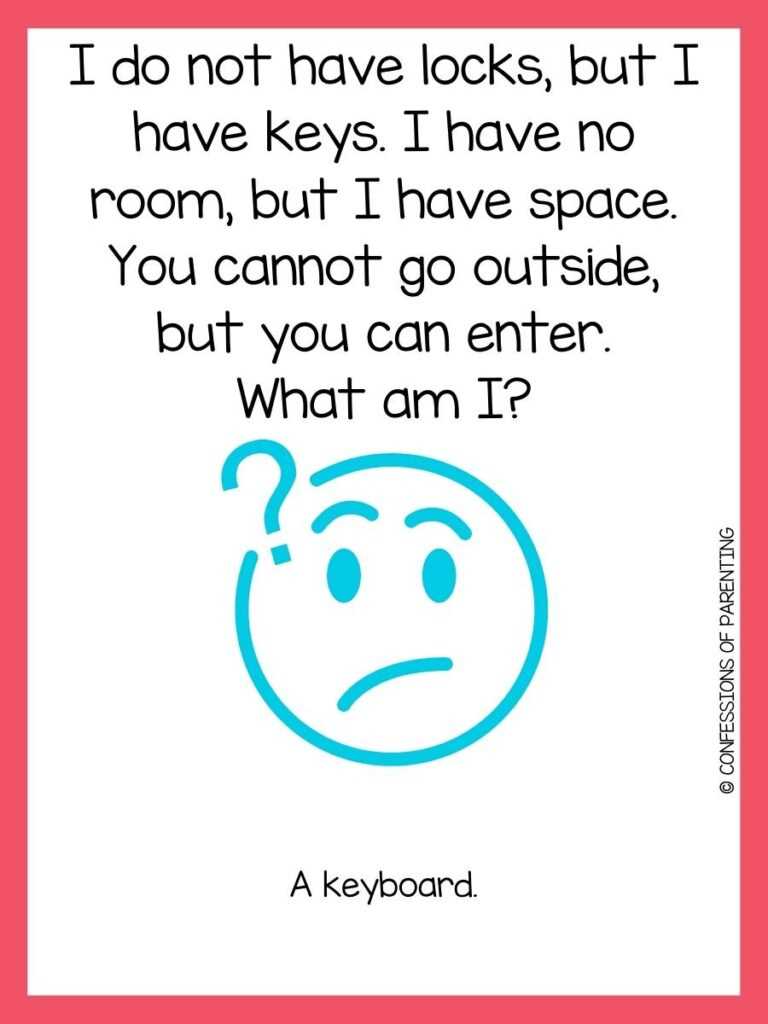
The first step in tackling any difficult challenge is to thoroughly examine all the given details. What are the key elements of the problem? What is being asked? Sometimes, the trick lies in understanding what is not being said. By identifying what’s relevant and disregarding the unnecessary information, you can focus your efforts on the crucial aspects that will lead to the answer.
Step 2: Think Creatively
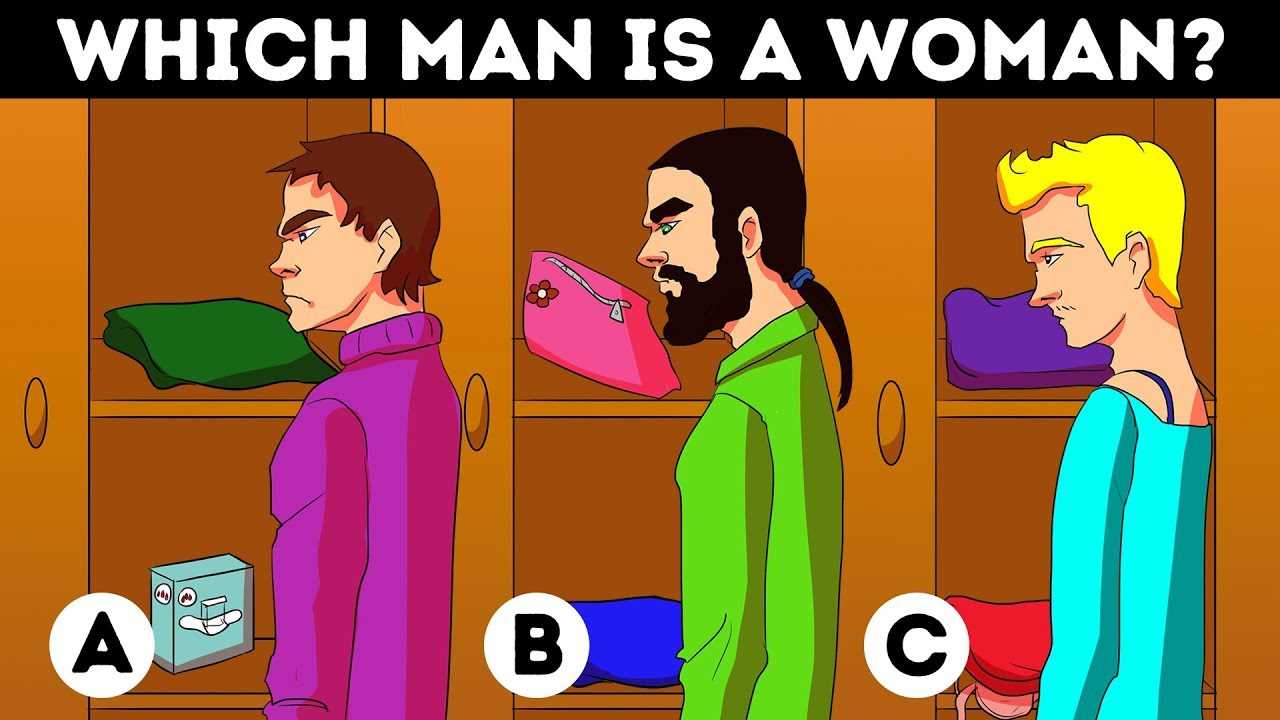
Often, the answer to a complex challenge isn’t something straightforward. Creative thinking is required to look beyond the obvious. Try to approach the problem from a different angle or consider alternative interpretations of the clues. When you allow your mind to think outside of the box, you open up possibilities that may not be immediately apparent.
Solving these challenges is less about finding the “right” answer and more about embracing the process of exploration and discovery. Once you break free from conventional thought patterns, the solution may reveal itself in a way that seems simple, but only after going through a deeper thought process.
The Power of Wordplay in Riddles
Wordplay is a powerful tool in creating puzzles that engage the mind and challenge our way of thinking. By manipulating language in clever ways, these challenges can mislead, surprise, and ultimately reveal simple solutions. The use of double meanings, homophones, and puns creates a playful environment where the obvious answer might not always be the correct one. Instead, these puzzles encourage us to reconsider our assumptions and think more deeply about the words being used.
Types of Wordplay
There are several types of wordplay that can transform an otherwise straightforward question into an intriguing challenge. Some of the most common techniques include:
- Homophones: Words that sound the same but have different meanings, often used to create confusion or misdirection.
- Puns: A form of wordplay that exploits multiple meanings of a word or similar-sounding words to create humor or ambiguity.
- Double Meanings: Words or phrases that have two or more interpretations, leading to a twist in understanding when the puzzle is solved.
- Reversed Phrases: Phrases where the meaning changes drastically when viewed from a different perspective or in reverse order.
Why Wordplay Matters
Wordplay makes puzzles engaging because it forces the solver to move beyond surface-level understanding. It requires attention to detail, the ability to think abstractly, and a willingness to accept that not everything is as it seems. In many cases, the answer lies in the clever manipulation of language, which turns a simple statement into something much more complex. This adds depth and excitement to the experience, as the solver is constantly trying to decode the hidden meaning behind the words.
Creative Thinking and Riddle Solving
Solving puzzles is not just about applying logic; it also requires a great deal of creativity. Often, the most challenging questions are the ones that demand out-of-the-box thinking, where the answers aren’t immediately clear. Creative thinking allows us to step away from conventional problem-solving methods and approach a puzzle from a new perspective. This process helps break through mental barriers and uncovers innovative solutions that might otherwise remain hidden.
Why Creative Thinking Matters
Creative thinking is essential because it encourages flexibility and adaptability in problem-solving. By allowing yourself to think beyond traditional frameworks, you can uncover solutions that might seem too simple at first glance, but only after considering alternative approaches. The more open you are to unconventional methods, the easier it becomes to spot patterns and connections that others might miss.
Techniques to Enhance Creative Thinking

There are several techniques that can help foster creative thought when tackling a complex problem:
- Mind Mapping: Visualizing ideas and concepts helps to break down complex tasks and identify new connections.
- Role Reversal: Imagining yourself in a different role or perspective can often reveal new angles on a problem.
- Free Association: Allowing ideas to flow without judgment can lead to unexpected breakthroughs.
- Questioning Assumptions: Challenging the assumptions you’re working under can open up new ways of thinking and solve problems more effectively.
By developing creative thinking skills, you can approach challenges with a fresh mindset and improve your ability to find solutions to even the most perplexing problems.
Using Riddles for Brain Exercises
Engaging in mental challenges can significantly enhance cognitive functions and mental flexibility. By tackling puzzles that require both logical reasoning and creative thought, individuals can stimulate various areas of the brain. These exercises promote problem-solving skills, improve memory, and boost concentration. Just as physical exercises strengthen the body, brain games help maintain mental sharpness and agility.
How Brain Games Improve Cognitive Functions
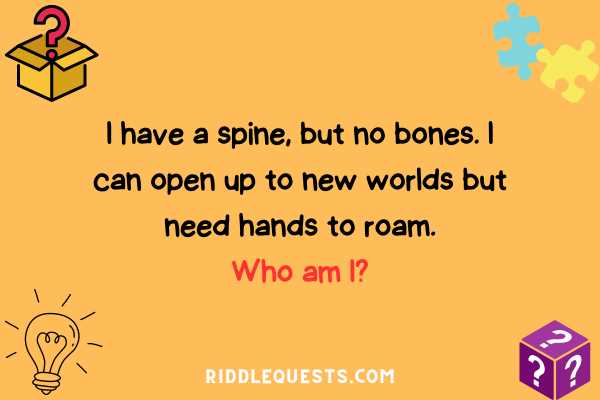
When the mind is regularly exercised, it becomes more adept at handling complex tasks, adapting to new information, and thinking critically. Mental exercises such as these not only keep the brain active but also build neuroplasticity, the brain’s ability to reorganize and form new neural connections. This process helps prevent cognitive decline as we age and keeps the mind agile and responsive.
Types of Exercises to Boost Mental Agility
There are various types of exercises that can challenge the brain and improve cognitive abilities:
- Pattern Recognition: Recognizing and solving patterns helps to improve both memory and attention to detail.
- Logical Reasoning: These exercises require you to think critically and logically to find the solution, sharpening problem-solving skills.
- Word Games: Puzzles that involve language, such as crosswords or anagrams, are excellent for enhancing verbal fluency and cognitive processing.
- Memory Challenges: Engaging in activities that require recalling information enhances memory retention and recall speed.
By incorporating these types of brain exercises into daily routines, individuals can improve mental clarity, foster creative thinking, and keep their minds active and healthy.
Riddles as a Social Activity
Engaging in brain teasers and puzzles often brings people together, fostering collaboration and interaction. These activities encourage teamwork and communication as individuals share their thoughts and attempt to solve the challenges together. Whether in casual gatherings or competitive settings, solving such mental puzzles can be a fun and engaging way to bond with others.
How Mental Challenges Bring People Together
When people work together to decipher clues or uncover solutions, they often experience a sense of unity and accomplishment. Solving complex problems collectively requires active discussion, which can spark new ideas and perspectives. This collaborative approach helps to strengthen social ties and enhances the group dynamic.
Benefits of Social Puzzle-Solving
- Improved Communication: Discussing potential solutions encourages clear communication and active listening within the group.
- Boosted Teamwork: Working together towards a common goal helps individuals to better collaborate, building trust and camaraderie.
- Increased Creativity: Shared problem-solving encourages out-of-the-box thinking and the development of innovative ideas.
- Stress Relief: Engaging in a fun and social activity allows participants to unwind and de-stress in a supportive environment.
Incorporating mental challenges into social settings not only entertains but also nurtures stronger relationships, encourages creative thinking, and improves cognitive abilities through shared experience.
The History of Classic Riddles

The tradition of using word puzzles to entertain, challenge, and educate spans back thousands of years. These mental challenges have existed in various forms across cultures, serving not only as a form of amusement but also as a means of testing wit and intelligence. Over time, they have evolved into an essential part of folklore, literature, and even educational practices.
Origins of Word Puzzles
The first known examples of this form of mental exercise date back to ancient civilizations. They were often used as a tool to demonstrate cleverness, wisdom, and understanding. Early examples can be found in cultures like ancient Egypt, Greece, and Rome, where they were included in stories, plays, and oral traditions.
Influence in Literature and Culture
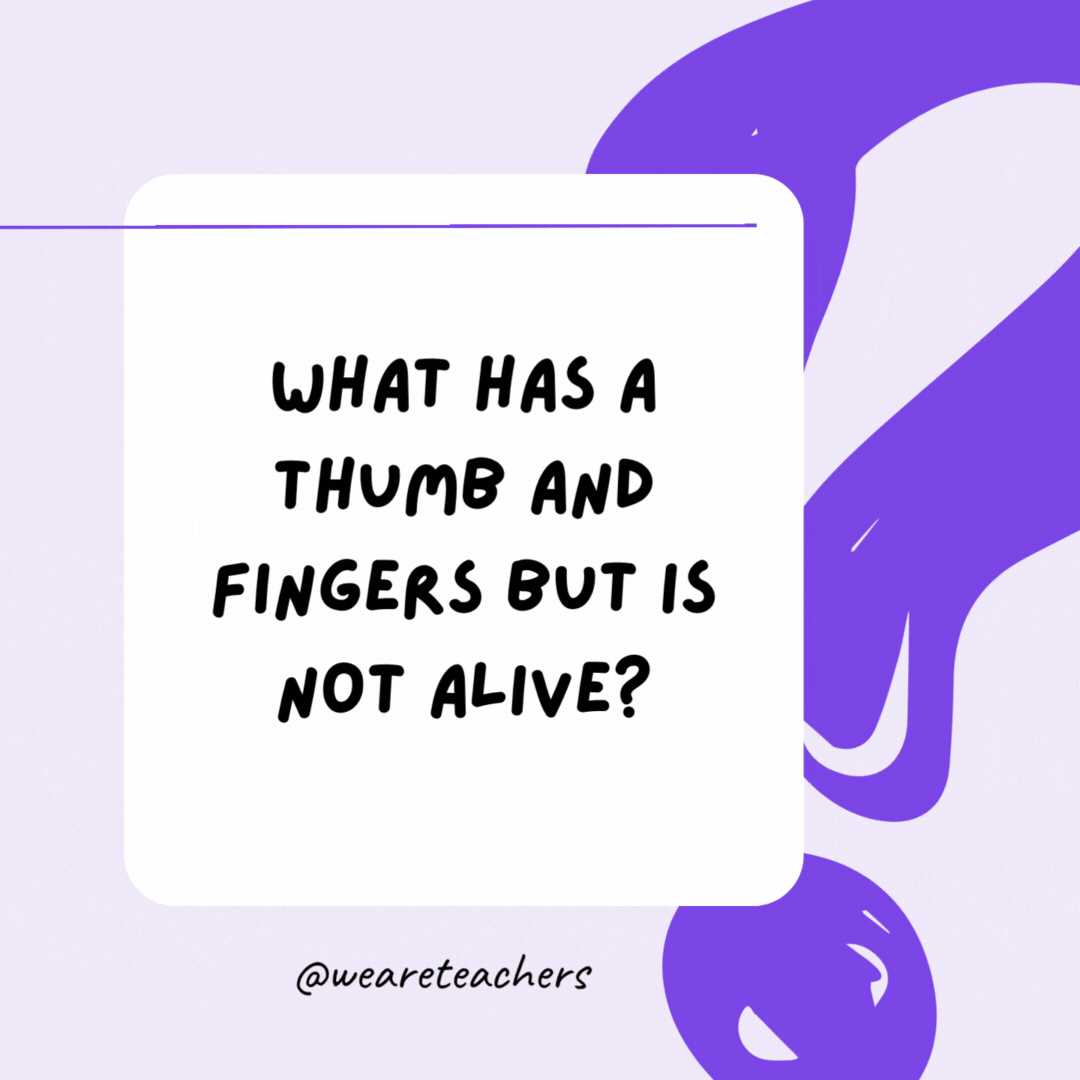
- Ancient Greece: Philosophers like Plato and Aristotle used puzzles as exercises in logic and reasoning.
- Middle Ages: In the medieval period, these mental challenges became a popular part of storytelling and were often featured in literature and court entertainment.
- Modern Times: Today, word puzzles are integral to various forms of media, from books and movies to video games, continuing their legacy in both popular culture and education.
Throughout history, these challenges have served as a reflection of human creativity, offering insight into the ways in which people from different eras and cultures approached problems, humor, and intellect.
Top Riddles to Test Your Skills
If you’re looking to challenge your mind and test your problem-solving abilities, a collection of thought-provoking challenges can be a perfect way to engage your brain. These exercises push the boundaries of logical thinking and creativity, offering both a mental workout and a sense of achievement when solved. Below are a few handpicked challenges that will test your wit and skill.
Classic Brain Teasers
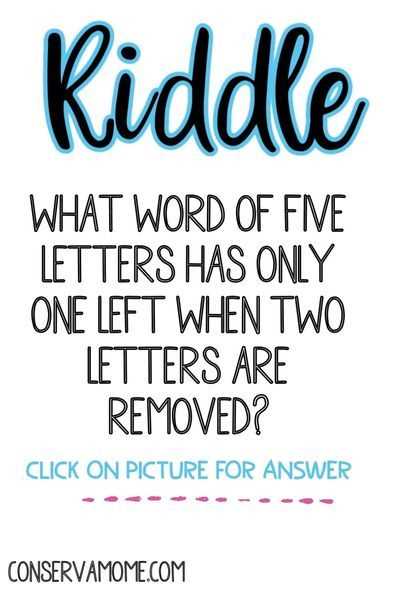
- The Unbreakable Lock: What has keys but can’t open locks?
- The Endless Journey: What comes once in a minute, twice in a moment, but never in a thousand years?
- The Timeless Mystery: The more you take, the more you leave behind. What am I?
Challenging Puzzles for the Sharp-Minded
- Invisible Forces: I am not alive, but I grow. I do not have lungs, but I need air. What am I?
- The Deceptive Box: The more of me there is, the less you see. What am I?
These challenges are designed not only to stretch your cognitive abilities but also to offer a fun experience. Some may appear deceptively simple at first glance, but as you dive deeper into them, you’ll realize the need for lateral thinking and an imaginative approach to uncover the solutions.
Why Simple Riddles Are So Addictive
There’s something inherently captivating about challenges that seem easy at first but quickly reveal a deeper level of complexity. This unique blend of accessibility and surprise has a magnetic quality, making them difficult to put down once you’ve started. The allure lies in their ability to engage our curiosity and spark the need for resolution. The simplicity of these puzzles draws you in, but their unexpected twists keep you coming back for more.
Humans are wired to enjoy problem-solving. When a challenge presents itself, our brains instinctively seek to solve it. The satisfaction of finding a solution, especially one that feels intuitive, is highly rewarding. Simple puzzles stimulate our brains by making us feel confident in our initial thoughts while subtly encouraging us to think more critically. As a result, this constant push to resolve puzzles taps into our desire for accomplishment, making us eager to solve just one more.
Additionally, the structure of these puzzles is designed to be just challenging enough to keep us engaged without overwhelming us. They strike a delicate balance, offering just the right amount of difficulty to spark curiosity while allowing us to experience that ‘aha!’ moment when the solution finally clicks. This feeling of victory, especially when the answer is much simpler than anticipated, is deeply gratifying, creating an addictive cycle of problem-solving that can last for hours.
How Riddles Improve Problem-Solving Skills
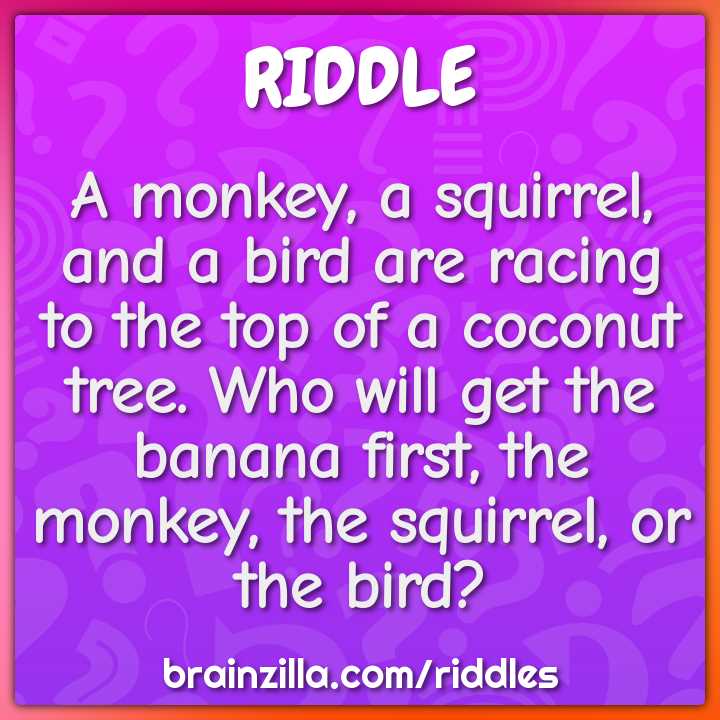
Engaging in challenges that require creative thinking and critical analysis can significantly enhance one’s ability to solve problems. These types of puzzles demand a mix of logical reasoning, lateral thinking, and pattern recognition. By confronting such challenges, individuals can develop strategies that improve both their analytical and intuitive thinking. Over time, this helps sharpen cognitive flexibility, which is essential for effective problem-solving in everyday life.
Strengthening Critical Thinking
When faced with a tricky question, it’s not always the obvious solution that leads to success. Instead, approaching the issue from multiple angles and questioning assumptions is key to finding the right answer. This process helps to train the mind to think critically and methodically, skills that are directly transferable to real-world situations. By regularly practicing this kind of mental exercise, one can become more adept at tackling complex challenges with greater efficiency.
Enhancing Cognitive Flexibility

One of the most important aspects of solving puzzles is the ability to shift thinking patterns when stuck. Often, a direct approach won’t work, and new methods must be explored. This adaptability improves cognitive flexibility, which allows individuals to approach problems from fresh perspectives. Whether it’s trying different strategies or recognizing hidden connections, developing flexibility in problem-solving is a valuable skill in many areas of life, from professional tasks to personal decisions.